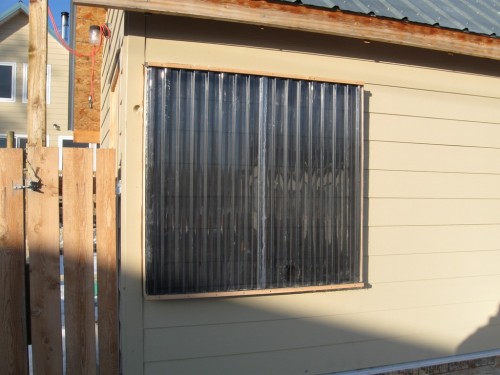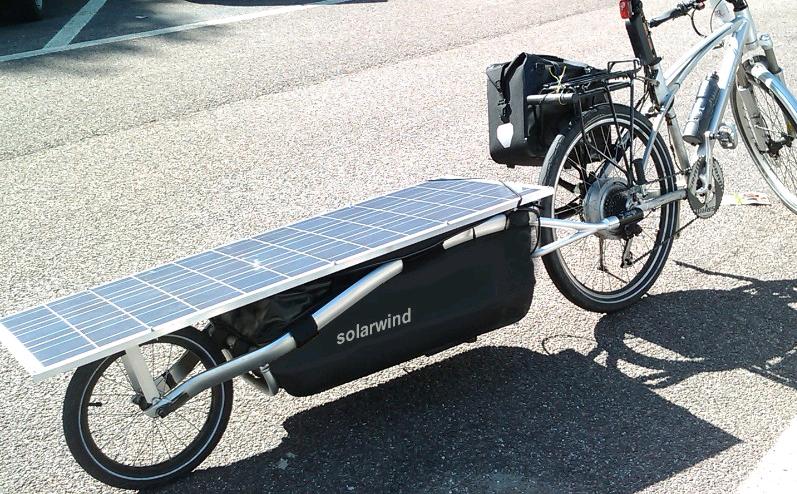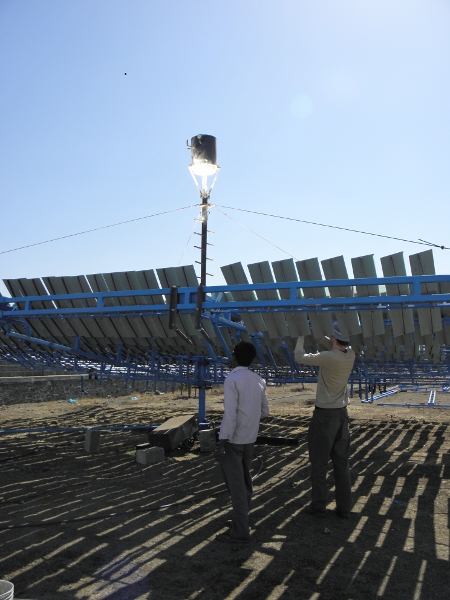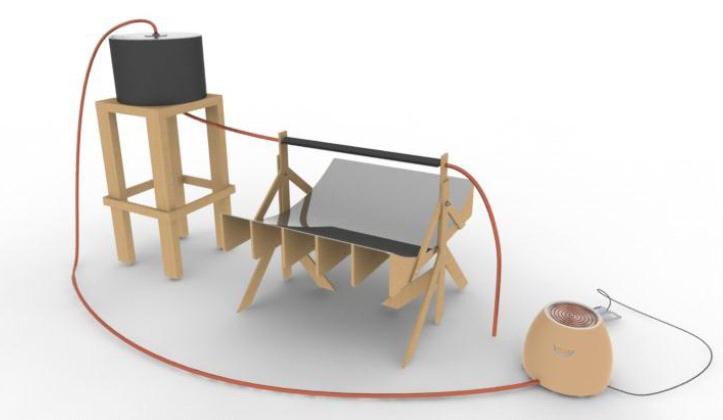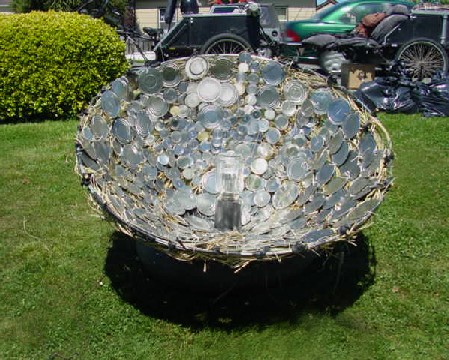“The town I live in is located near the Alberta-BC border, about 100 miles north of the US Canada border. Winters here are long and cold, but many days are crystal clear and sunny.”
“Our tool shed has a south-facing wall which was ideal to mount a solar thermal direct-air collector panel. The collector panel exterior dimensions are 48” high x 49.5” wide. Total budget: $200.00 Result: 16 sq ft harvest up to 6 kWh/day.”
Build a Solar-Thermal Direct-Air Heater (PDF). Introduction (and another project) here.
